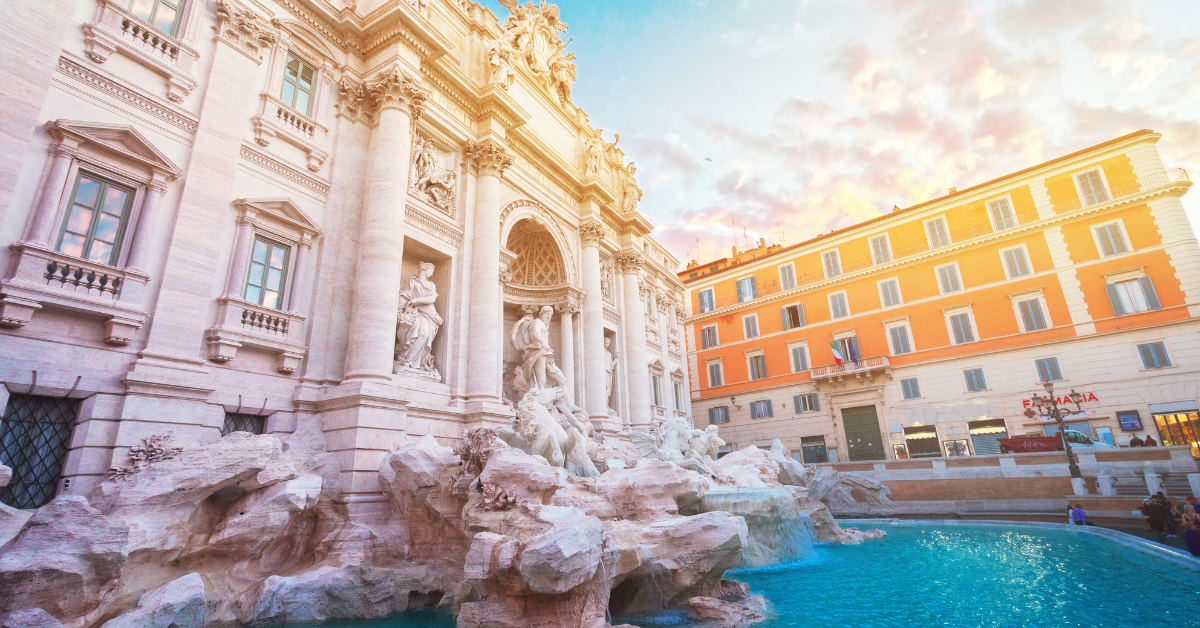The capital of Italy, Rome, is sometimes written in Japanese as “羅馬.” This notation is not just a phonetic rendering but has a historical background transmitted from China to Japan. For the Japanese, Rome is not only a center of history, art, and religion but also a city remembered as a stage for sports.
The Origin of the Kanji Notation “羅馬”
The reason Rome is written as “羅馬” is due to phonetic transcription developed in ancient China, which was later transmitted to Japan. In Chinese, the Latin “Roma” was transcribed phonetically as “羅馬.” This notation was then adopted into Japanese texts and has continued to be used.
In Japanese, kanji often carry symbolic meanings. “羅” means spread or net, while “馬” means strength or momentum. Thus, it was not only a phonetic copy but also a choice that evoked Rome’s grandeur and power.
The Connection Between “羅馬” and Romania
The term “羅馬” is used not only for the city of Rome but also for Romania. The name Romania derives from the phrase “Land of the Romans,” showing how deeply the region was influenced by the ancient Roman Empire.
The fact that both the city and the country share the character “羅馬” is evidence of the vast influence of the Roman Empire.
| Kanji Notation | Country or City | Origin |
|---|---|---|
| 羅馬 | Rome (City) | From Chinese phonetic transcription of “Roma” |
| 羅馬尼亜 | Romania (Country) | From Latin meaning “Land of the Romans” |
The Japanese Image of Rome
For the Japanese, Rome is strongly associated with the image of “the center of history and civilization.” The Colosseum and the ruins of the Roman Forum symbolize the prosperity of the ancient empire, while the Vatican is regarded as a spiritual center.
In modern Japanese education and literature, “羅馬” was often depicted as a symbol of modernization and Western culture. Today, it is widely recognized as a popular tourist destination, associated with landmarks such as the Trevi Fountain and the Spanish Steps.
Main Elements of the Japanese Image of Rome
| Aspect | Content |
|---|---|
| History | Ancient Roman Empire, Colosseum, ruins |
| Religion | Vatican City, Catholic center |
| Art | Renaissance art, Michelangelo, Raphael |
| Modern Tourism | Trevi Fountain, Spanish Steps |
The Connection Between Sports and 羅馬
Rome is not only about culture and history but also a city of sports.
In ancient Rome, gladiatorial contests and chariot races were held as public entertainment. The Colosseum and the Circus Maximus became the iconic stages of mass spectacles, similar to today’s sports events.
In modern times, the 1960 Rome Olympics was a turning point for Japan. Japanese gymnasts performed exceptionally well, and the event became a milestone in Japan’s sports history.
Comparison of Ancient and Modern Sports
| Era | Competitions/Entertainment | Venue |
|---|---|---|
| Ancient | Gladiatorial contests, chariot races | Colosseum, Circus Maximus |
| Modern | Olympic events, soccer | Stadio Olimpico |
Today, professional soccer clubs such as AS Roma and Lazio are based in the city, serving as symbols of civic pride. Sports, from ancient times to the present, remain an essential part of Rome’s identity.
The Symbolism of the Kanji Notation
The characters “羅馬” are more than phonetic transcription; they are a culturally symbolic notation.
- 羅 → Spread, connection
- 馬 → Strength, driving force
Together, the two characters embody the traits of Rome, representing the empire’s vast territorial reach and powerful momentum.
Symbolism of the Kanji Characters
| Kanji | Meaning | Connection to Rome |
|---|---|---|
| 羅 | Net, spread | Empire’s vast dominion |
| 馬 | Strength, momentum | Military power, development of transportation |
Conclusion
The reason Rome is written as “羅馬” lies in Chinese phonetic transcription transmitted to Japan. But this was more than a mere transliteration: it symbolized the city’s grandeur and strength.
Moreover, the term “羅馬” connects with the name of Romania, representing the enduring legacy of the Roman Empire.
For the Japanese, the image of Rome encompasses history, religion, and art, but also tourism and sports. In this way, the two kanji characters “羅馬” condense multiple aspects of civilization, faith, art, and athletics into one expression, making them a fitting representation of the Eternal City.






